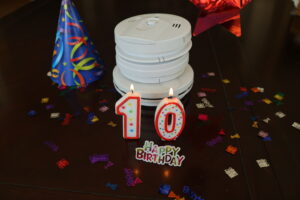The Life of a Smoke Alarm – How A Decade Flies!
Leave a CommentNo kidding, I’m passionate about fire protection! To prove it, I could tell you stories about the damage I have seen from various failures from freezes to fire pump cooling to what happens when a fire hydrant’s weep holes are clogged…. But instead, I will tell you about smoke alarms!
Although it’s still new in my head, my home just turned 10 years old. The decade has seen the replacement of two household appliances and at least one HVAC repair… now what? A paint and décor refresh? Maybe, but that’s not what the fire protection engineer is thinking! It’s time to replace the smoke alarms! (more…)



